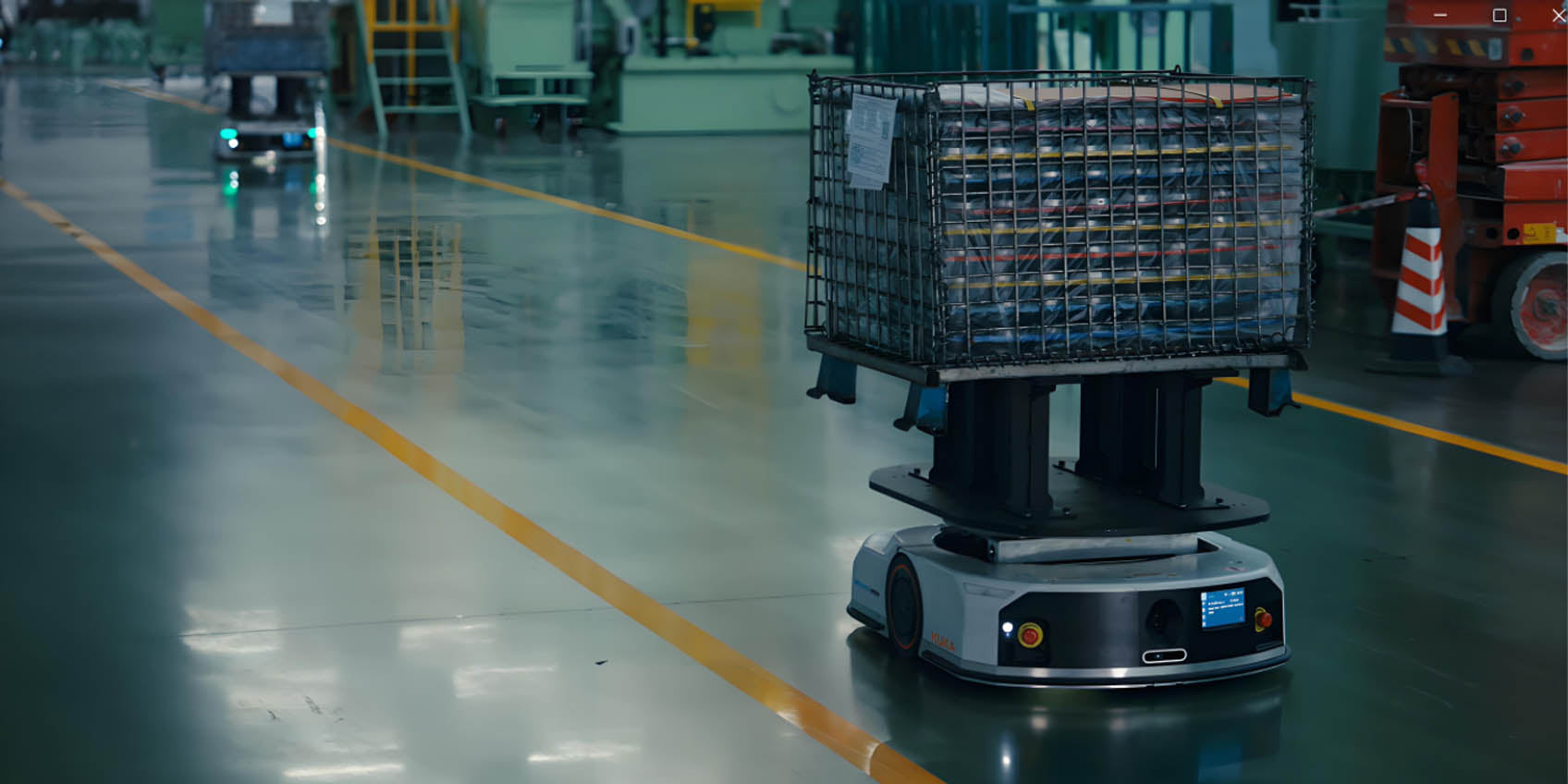Smart Pallet Identification:Boosting Logistics Efficiency and Accuracy

With the rapid development of artificial intelligence (AI), computer vision, Internet of Things (IoT), and deep learning technologies, smart pallet identification has emerged as a crucial component in modern logistics, warehouse management, and supply chain optimization. This technology integrates image recognition, Radio Frequency Identification (RFID), barcode scanning, and sensor technologies to achieve efficient and precise tracking and management of pallets in warehousing, transportation, automated production, and inventory control.
Traditional pallet management depends on manual data entry and scanning, which is inefficient and prone to errors. However, smart pallet identification technology simplifies and enhances these processes by enabling accurate real-time tracking. By precisely tracking pallets, logistics companies can manage inventory, transportation, and warehouse operations more efficiently, reducing costs, improving effectiveness, and driving digital transformation within the industry.
What is Pallet Identification?
Pallet Identification is a technology that uses image processing, RFID, barcode scanning, and sensor technology to identify and track pallets. Pallets are commonly used for transporting and storing goods. Pallet identification systems can scan labels, barcodes, QR codes, or RFID tags on the pallets to accurately identify their status, location, and other key information.
Compared to traditional manual management, smart pallet identification offers automated management, real-time monitoring, and data sharing, significantly improving the transparency and efficiency of warehouse logistics processes.

Smart Pallet Identification: A New Revolution in Logistics Management
Efficient Warehouse Management
Pallet identification technology greatly improves inventory management and accuracy in warehouse operations by providing precise labeling and real-time tracking of pallets. Warehouse staff can easily manage inventory, order picking, and inbound/outbound operations by accessing real-time pallet status and location information.
- Automated Inventory Management: With pallet identification systems, businesses can automatically update inventory without manual intervention, reducing human errors and ensuring accurate stock levels.
- Precise Goods Location: By tracking pallet positions in real-time, businesses can more accurately locate pallets, optimize warehouse space, and reduce time spent searching for and handling goods.
Smart Logistics: Enhancing Transportation Efficiency and Transparency
Pallet identification technology also boosts transportation efficiency by ensuring real-time tracking of each pallet throughout the transportation process. This enhances operational transparency, increases trust in transportation systems, and ensures safe and on-time deliveries.
- Real-Time Cargo Tracking: The system continuously updates the transportation status of each pallet, helping logistics companies address any issues promptly and ensure safe delivery.
- Optimized Transportation Processes: With precise pallet management, logistics companies can optimize transportation routes and schedules, reducing costs and improving overall efficiency.
Automated Production and Warehouse Optimization
In automated production and warehouse operations, pallet identification systems integrated with robotics, automation equipment, and conveyor systems play an increasingly important role. These systems can quickly identify and handle pallets, automate the movement of goods, and enhance safety while improving production efficiency.
- Automated Sorting and Distribution: Pallet identification technology can be combined with automated sorting systems, helping robots in production lines and warehouses quickly identify and sort pallets, reducing manual intervention.
- Intelligent Scheduling Systems: Combined with pallet identification, intelligent scheduling systems can automatically allocate pallets, ensuring efficient coordination between different areas of production lines and warehouses.

Enhancing Supply Chain Efficiency: Precision Tracking and Data Sharing
Supply Chain Optimization and Information Sharing
Pallet identification technology enables businesses to achieve supply chain transparency and improve data sharing. Information about each pallet, such as location, status, temperature requirements, and more, can be shared in real-time through smart systems, ensuring that all parties in the supply chain have access to critical data for optimized operations.
- Real-Time Data Sharing: The system transmits pallet data such as location and status via cloud platforms, allowing decision-makers to respond swiftly and efficiently.
- Supply Chain Transparency: By enabling real-time tracking of pallets, businesses can improve communication and reduce delays, improving the speed and flexibility of the entire supply chain.
Smart Inventory Management: Avoiding Overstocks and Stockouts
Pallet identification technology helps businesses achieve precise inventory management, preventing stock surpluses and shortages. By tracking pallet data in real-time, companies can adjust production plans and procurement strategies accordingly.
- Real-Time Inventory Monitoring: The system continuously monitors inventory levels, notifying managers of stock shortages or excess, ensuring efficient inventory management.
- Demand Forecasting and Allocation: By analyzing pallet data and historical patterns, the system can forecast demand and optimize production schedules to prevent delays in operations.

Pallet Identification Technology: Supporting Industrial Automation and Efficiency
Industrial Automation and Robotics Applications
Pallet identification technology is widely applied in industrial automation and robotics. High-precision pallet tracking allows robots to automate pallet handling, sorting, and unloading in manufacturing environments, reducing human intervention and increasing efficiency.
- Automated Handling and Unloading: Pallet identification systems enable robots to automatically identify and handle pallets, completing tasks efficiently and safely.
- Production Line Integration: The system seamlessly integrates with automated devices on production lines, ensuring efficient pallet management and transport, enhancing overall productivity.
Conclusion
Smart pallet identification technology is showing tremendous potential in areas such as warehousing logistics, supply chain management, and automated production. As technology advances, pallet identification systems will continue to enhance operational efficiency, reduce costs, and drive the digital transformation of the logistics and supply chain sectors.
As RFID, image recognition, and automated control systems continue to evolve, smart pallet identification technology will become a core element of future intelligent warehousing and supply chain management, bringing significant benefits such as cost savings, enhanced competitiveness, and more efficient operations for enterprises.
By focusing on precision measurement engineering, accuracy, and leveraging Time-of-Flight (TOF) technologies alongside pallet identification, the logistics and manufacturing sectors will continue to thrive with increasingly automated, data-driven processes.




